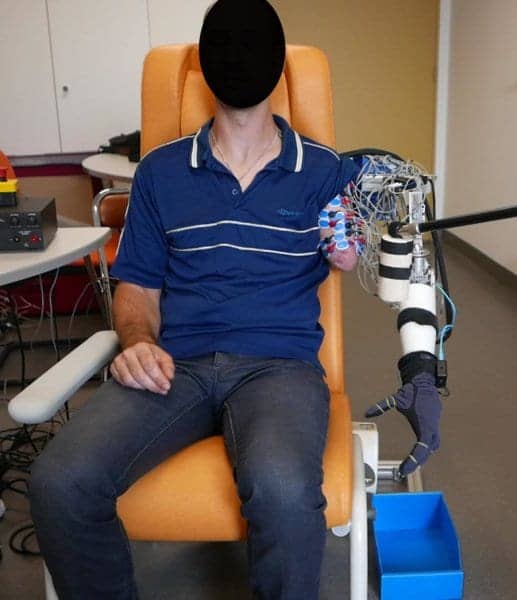
Pictured is one of the participants during the experiment, bending his elbow to grasp the cylinder in front of him. (Photo courtesy of N. Jarrassé 2018)
In collaboration with physicians, researchers from the French National Centre for Scientific Research (CNRS) and Aix-Marseille University have developed a prototype capable of detecting phantom limb movements and activating a prosthetic arm.
The prosthesis does not require any surgery and patients do not need training, according to their study published in Frontiers in Bioengineering and Biotechnology.
The team of researchers developed a natural approach of prosthesis control that exploits the phenomenon in which amputees can feel where there “phantom limb” used to be and can voluntarily move it. For the prototype, the researchers created algorithms capable of recognizing muscle activity generated by mobilization of the phantom limb and reproduction of the detected movement by the prosthesis: intuitive control, without training or surgery, explains a media release from CNRS.
In the tests, two transhumeral amputees used this type of control to act with a prosthesis not worn but placed near their arm stump. The results showed that the participants could control the prosthesis and achieve the task after only a few minutes of familiarization with the system, despite long action periods.
In further research, the researchers are conducting tests on prostheses being worn, while also contributing to increasing knowledge about the phenomenon of the phantom limb, whose mechanisms are not yet properly understood.
The scientists also suggest the need to reconsider the phenomenon of phantom limbs, which is generally taboo, often attributed to mourning the lost limb, and is mainly considered from the angle of pain.
[Source(s): CNRS, Science Daily]



